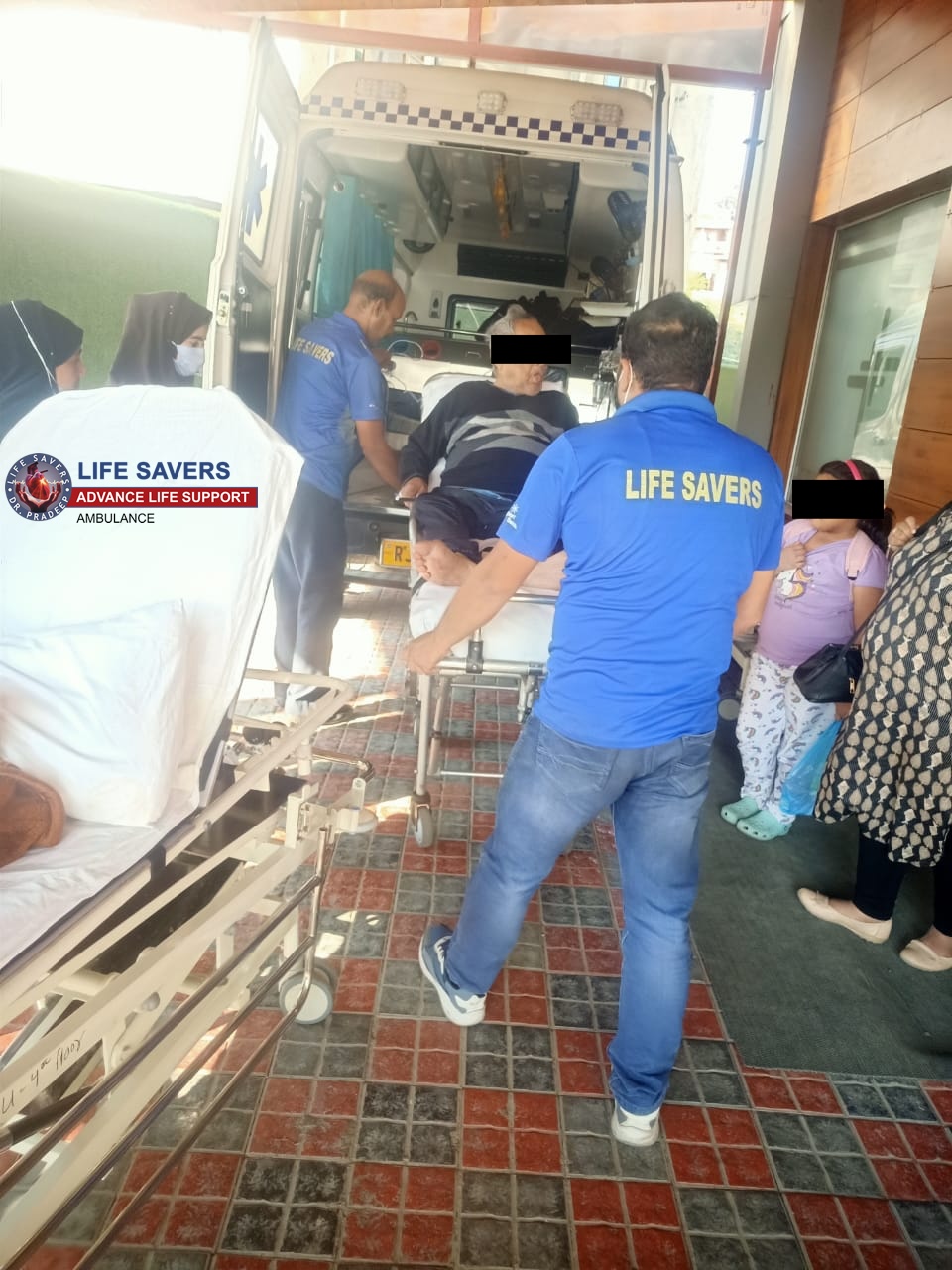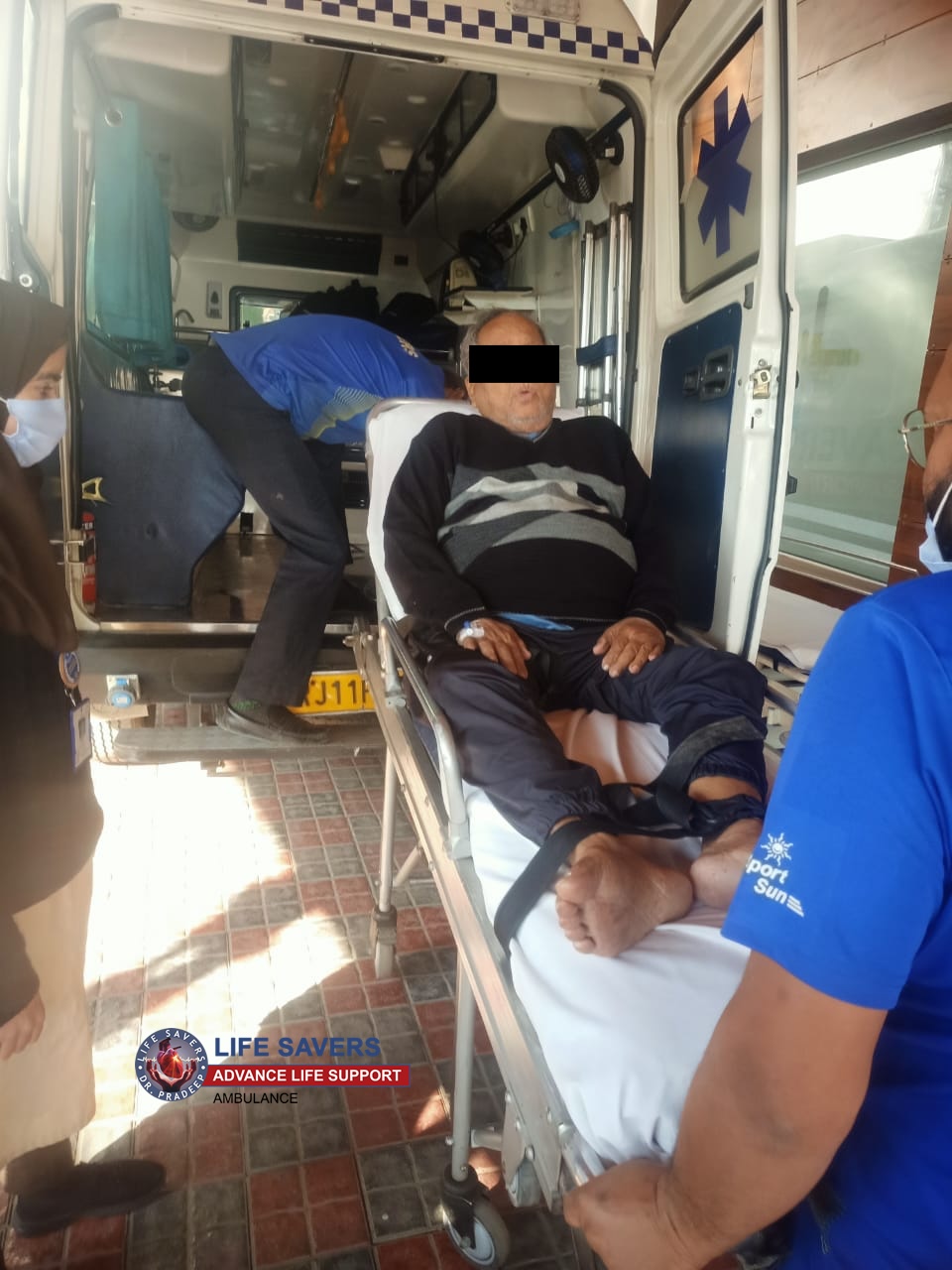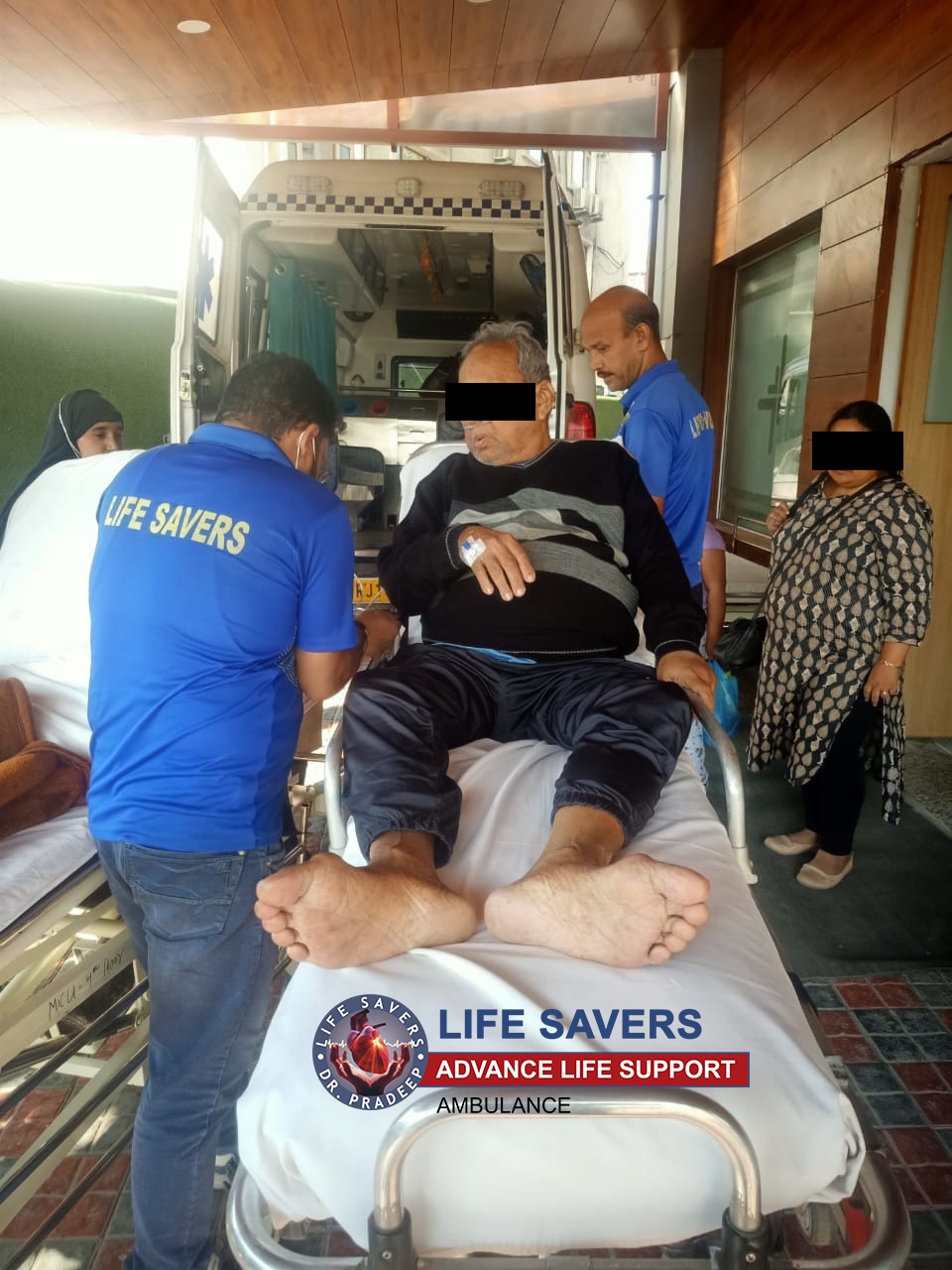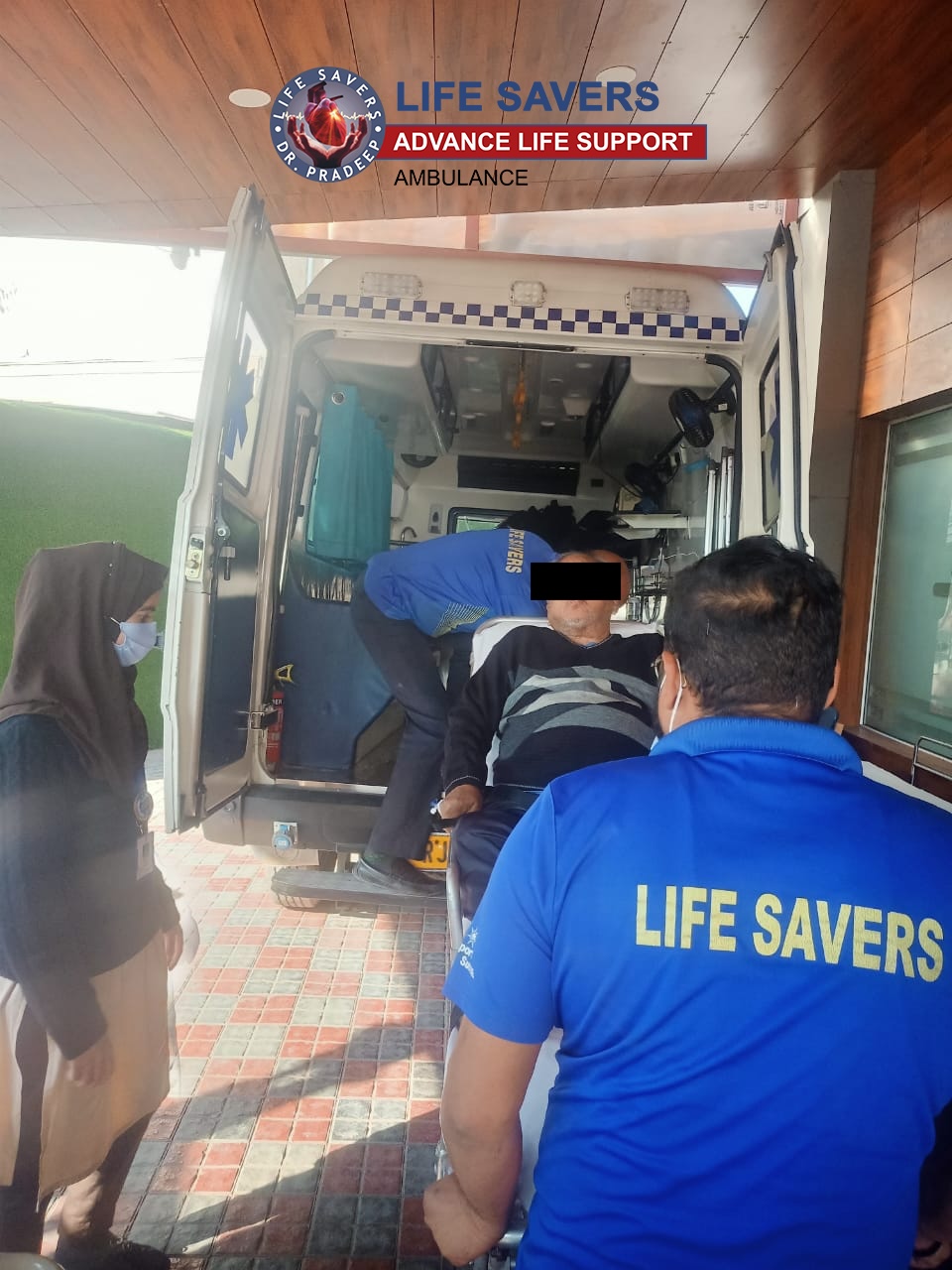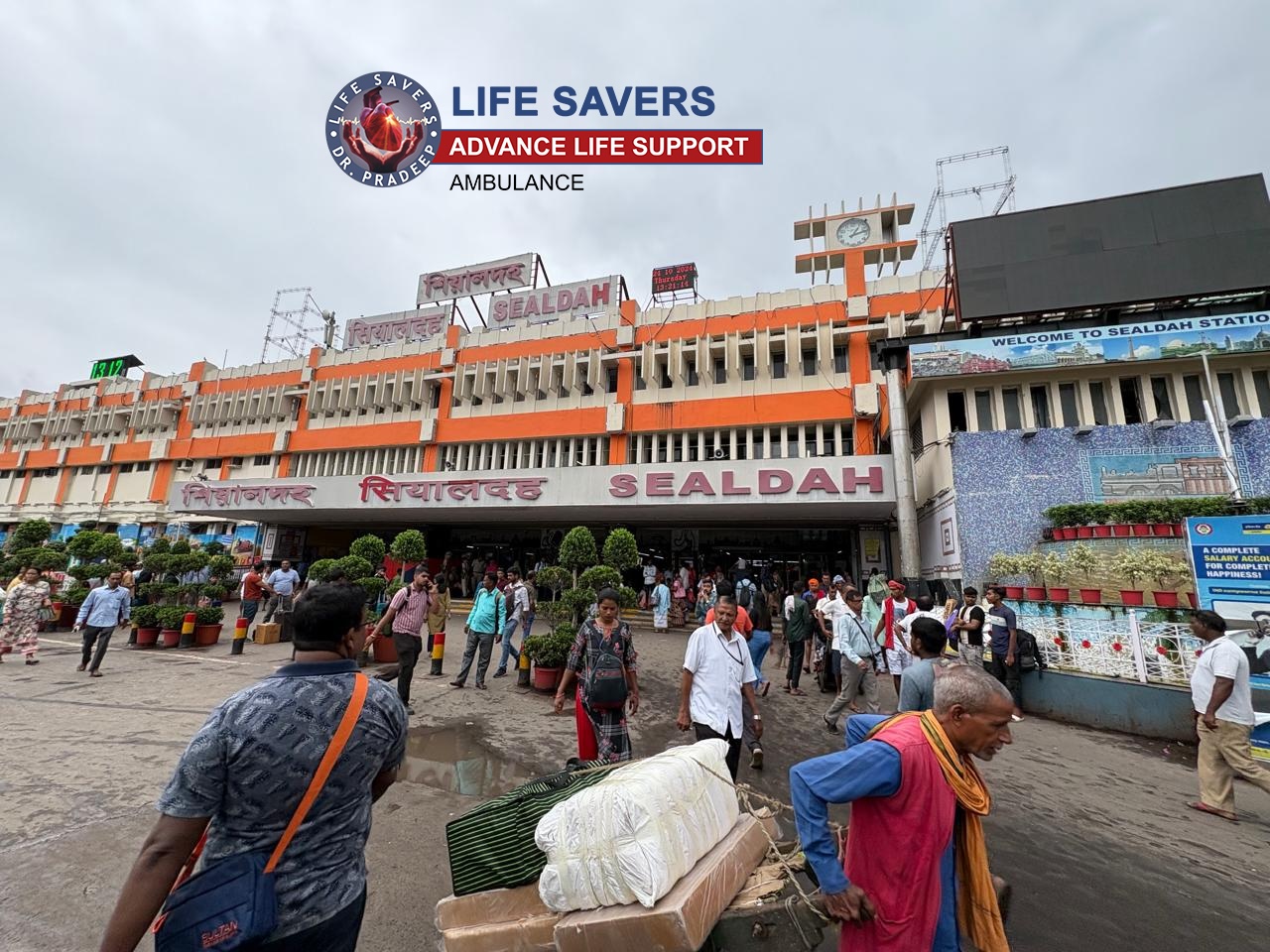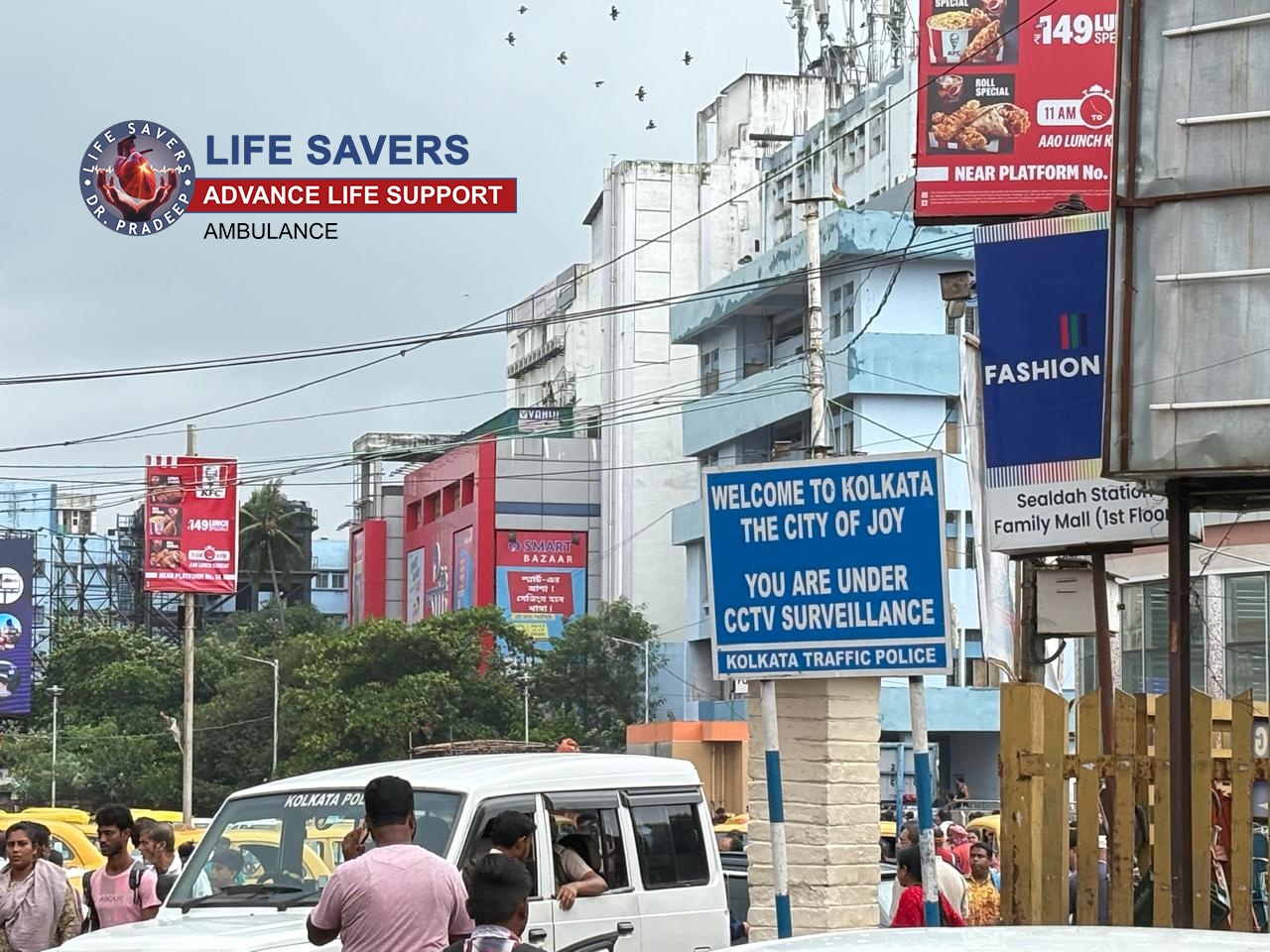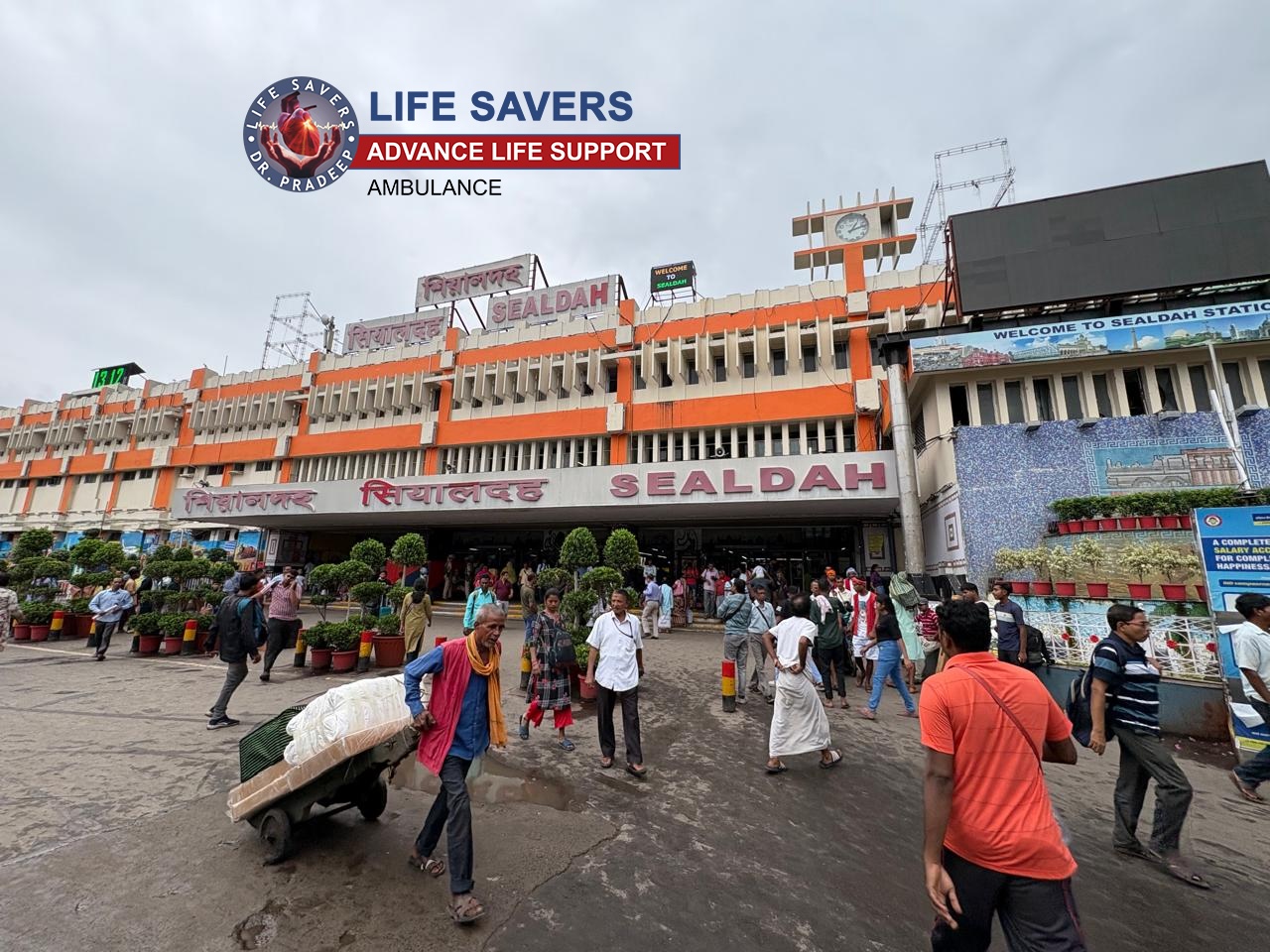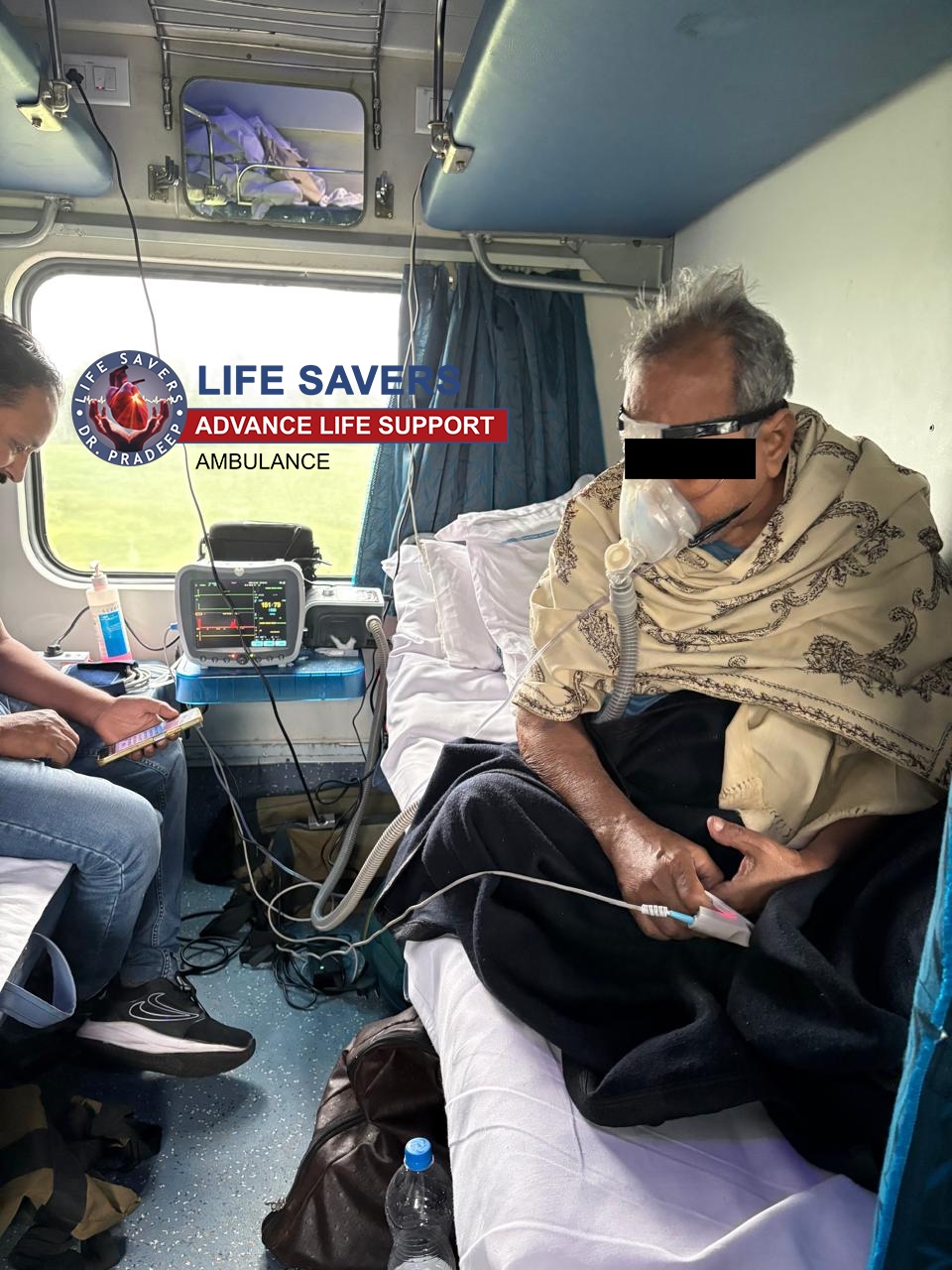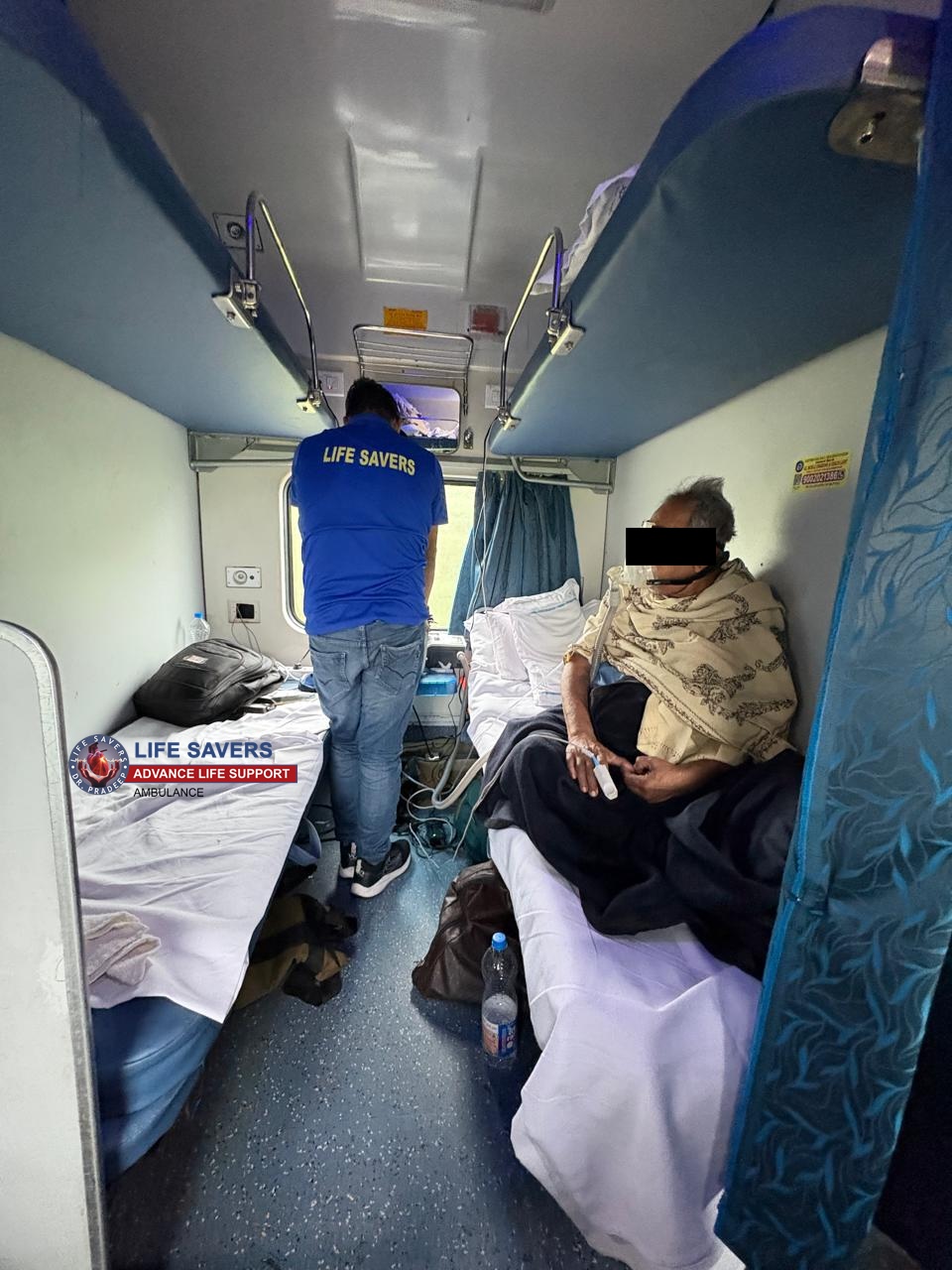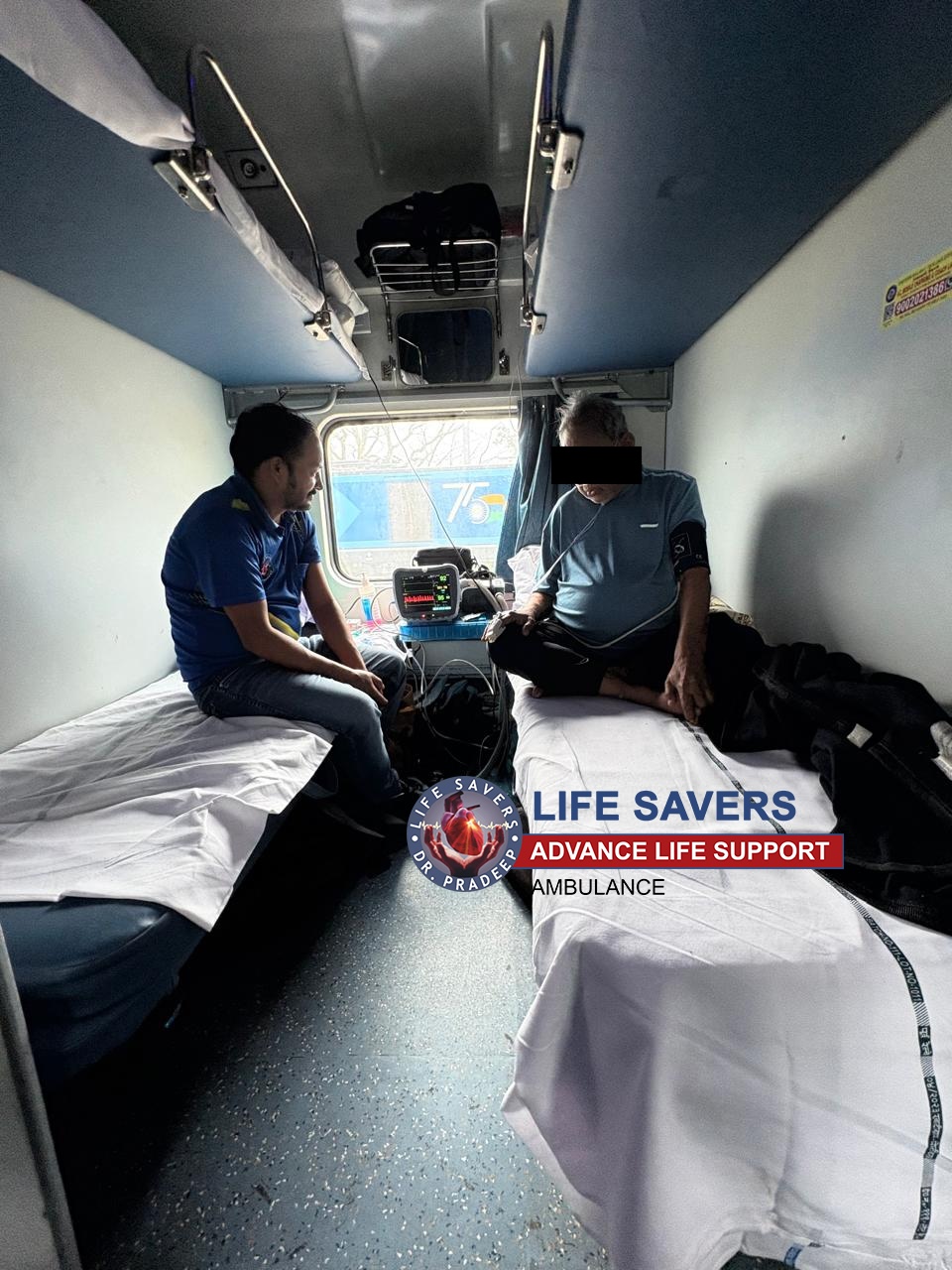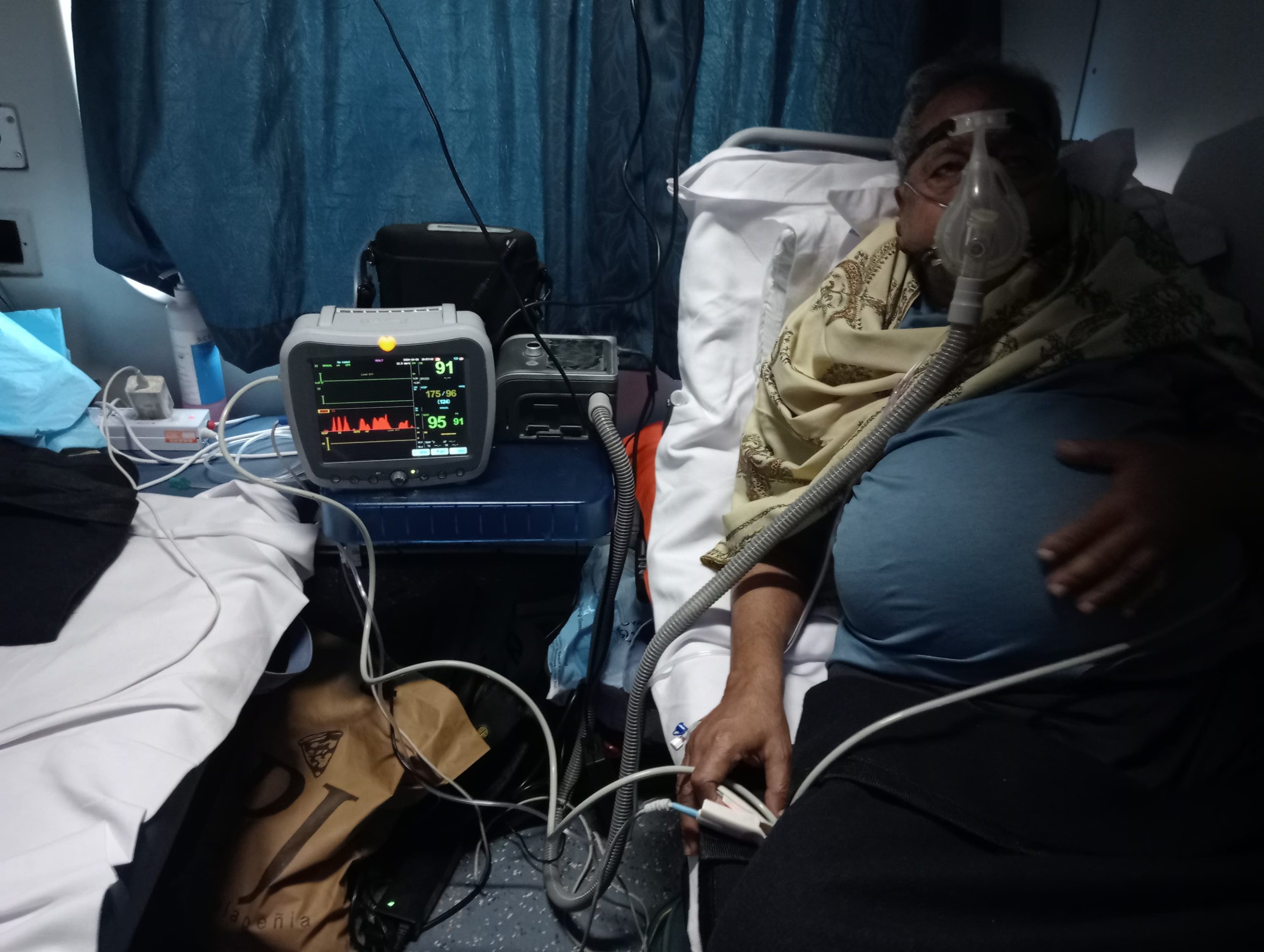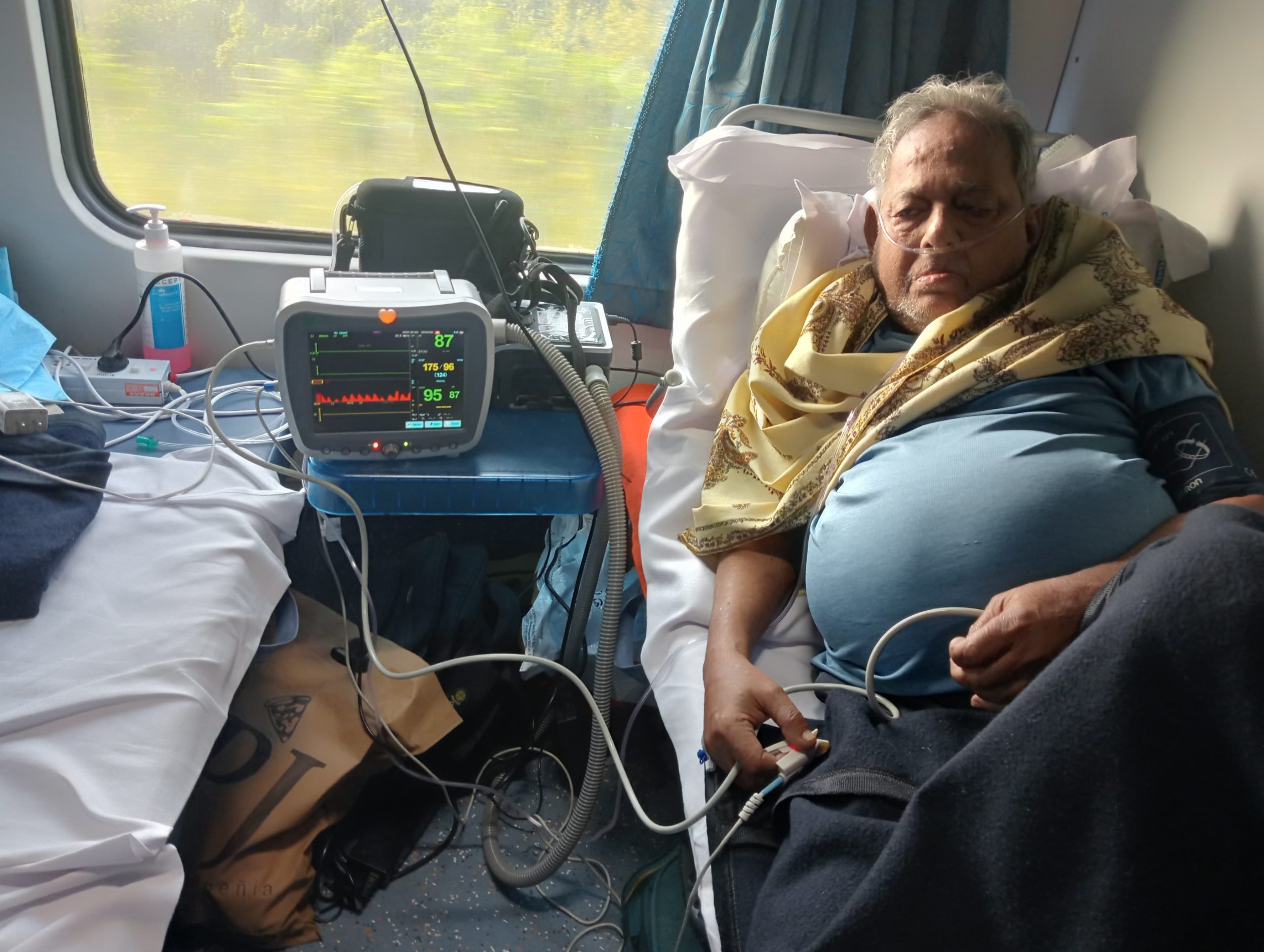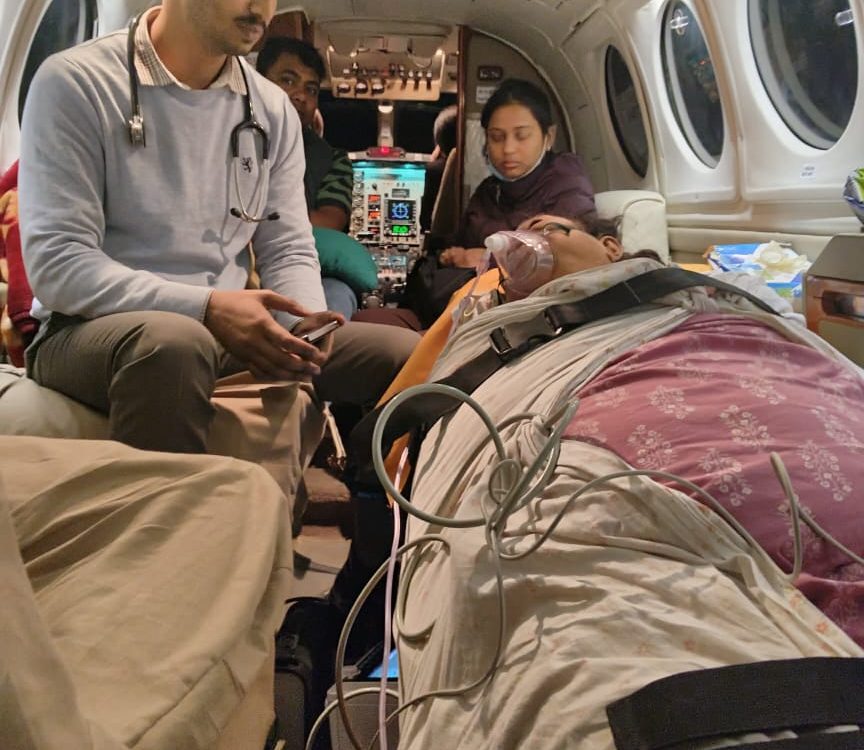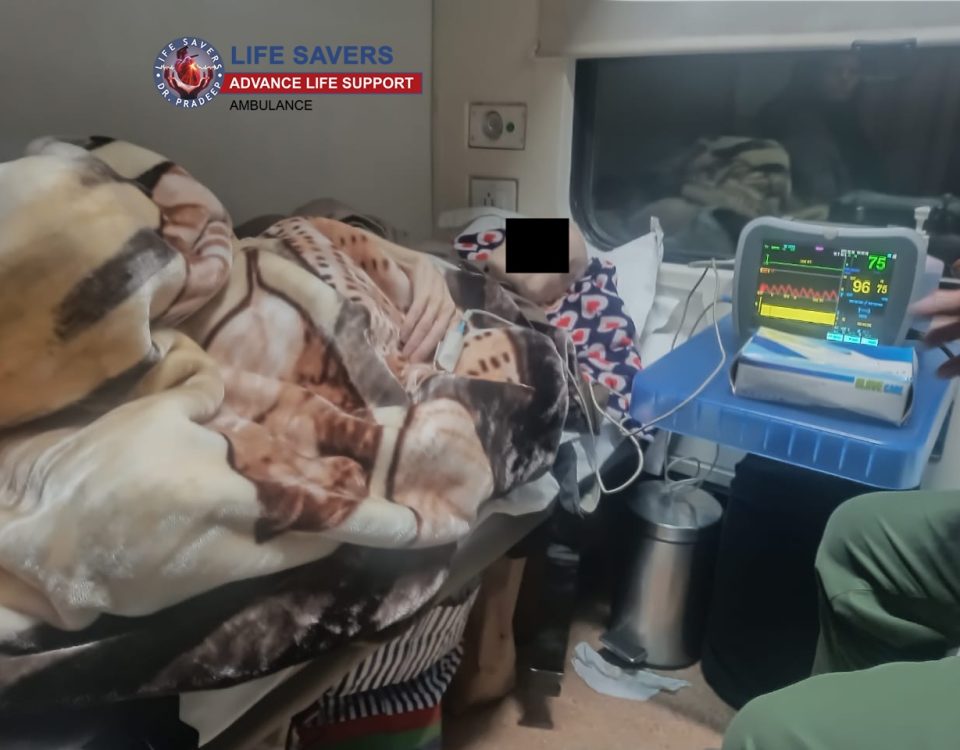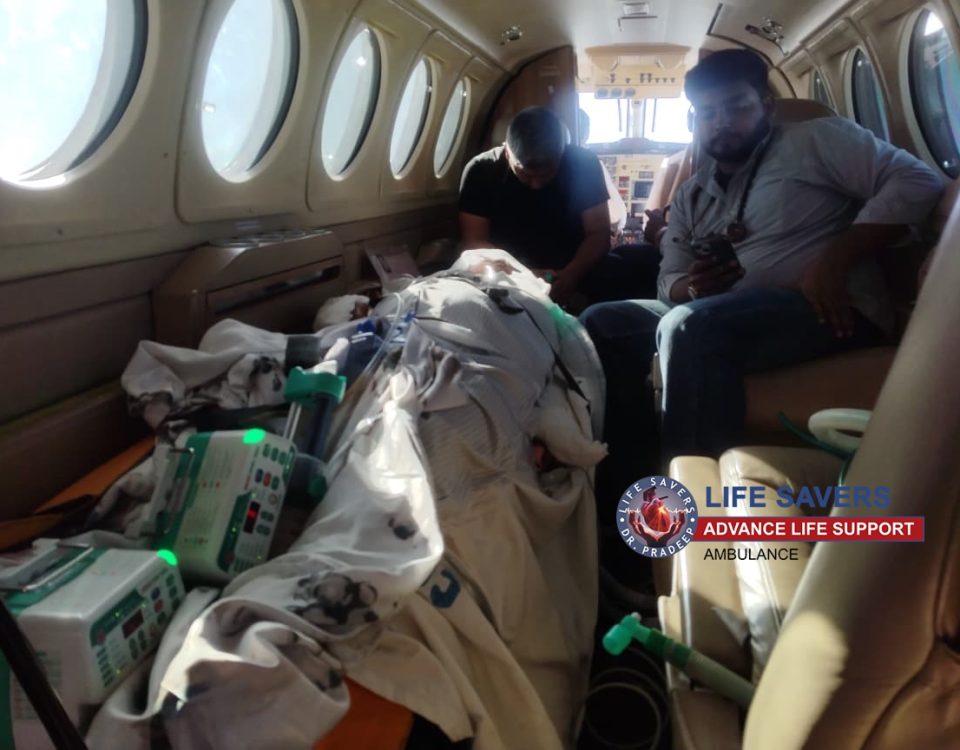Ensuring a Safe Transfer for a Patient with Chronic Lung Disease from Ladakh to Kolkata
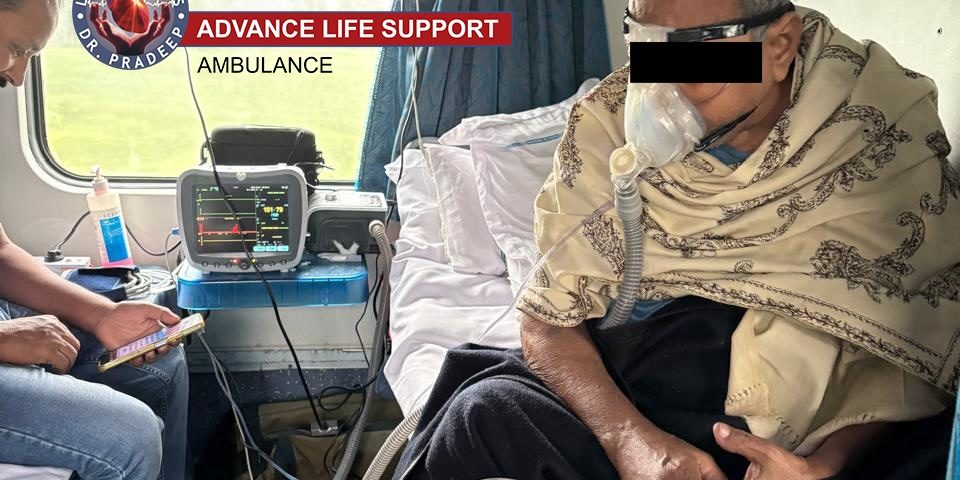
For individuals with respiratory issues, a trip to high-altitude destinations like Ladakh can quickly escalate into a medical emergency. Lifesavers Ambulance was recently entrusted with the transfer of a 70-year-old patient whose chronic lung condition was severely exacerbated during a vacation in Ladakh. This complex case involved meticulous planning to ensure that the patient could safely return to Kolkata for advanced care, despite challenges posed by his high oxygen requirements.
The Case: High-Altitude Complications in Ladakh
During his stay in Ladakh, the patient, who had a pre-existing lung condition, began to experience worsening respiratory distress due to the high-altitude, low-oxygen environment. He was initially admitted to a local hospital in Ladakh for three days, where doctors provided oxygen support and basic stabilization. However, his condition remained critical, with his oxygen requirements reaching 7 litters per hour—a high rate that created a challenge in maintaining adequate supply.
Recognizing that he would require a more advanced facility for further treatment, the family decided to transfer him to Kolkata. After reaching out to Lifesavers Ambulance, our team immediately began planning a multi-step transfer to accommodate his high oxygen needs.
Step 1: Calculating Oxygen Requirements for Transfer from Srinagar to Delhi
Given the high altitude of Ladakh and the extensive oxygen requirements, Lifesavers recommended that the family first bring the patient to Srinagar, a lower-altitude location that would help in stabilizing his condition for the journey. Once in Srinagar, our team carefully calculated the oxygen needs for a transfer from Srinagar to Delhi, planning for a supply that could reliably provide 7 litters per hour throughout the journey.
To ensure the patient’s safety, Lifesavers arranged an Advanced Life Support (ALS) road ambulance equipped with oxygen cylinders and backup systems for continuous supply. The ALS ambulance also included ICU-like support systems, such as a ventilator, to handle any complications. The ambulance was staffed with a specialized medical team, including a doctor and paramedic, who closely monitored his vitals and managed his oxygen levels as they travelled through the mountainous terrain to Delhi.
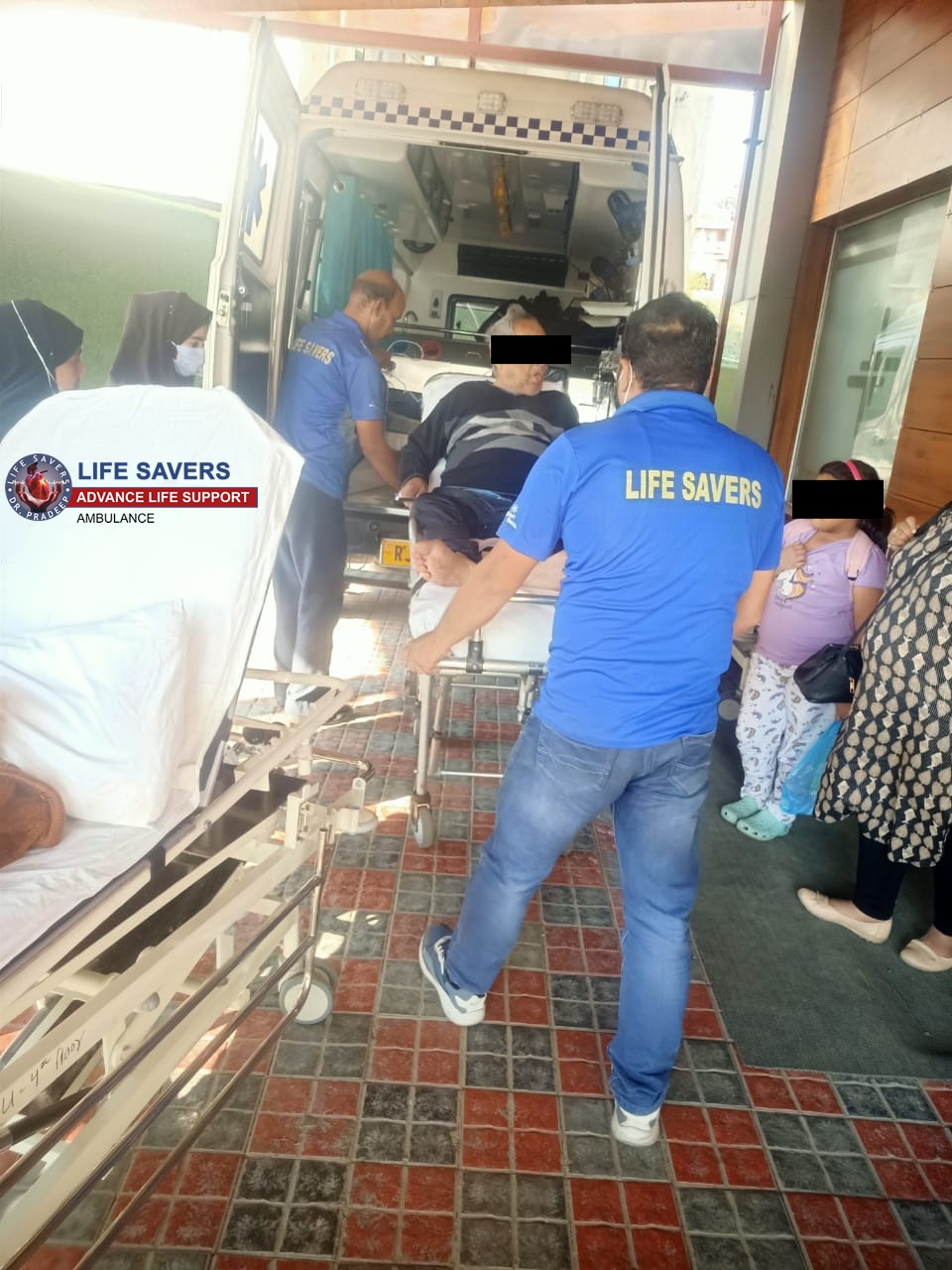
Step 2: Train Ambulance Transfer from Delhi to Kolkata
Upon reaching Delhi, Lifesavers arranged for the next leg of the journey to Kolkata using a train ambulance. A fresh medical team, including a doctor and paramedics, took over care in a dedicated ICU-equipped compartment to maintain continuous monitoring and oxygen support. This transition was critical, as it allowed for a stable and controlled environment where the patient’s high oxygen requirement could be met comfortably over the long-distance journey.
The train ambulance provided a smooth and restful ride, with medical personnel regularly adjusting the oxygen flow to match the patient’s needs. Thanks to the carefully planned oxygen supply and seamless coordination, the patient was safely transported to Kolkata, where he was admitted to a hospital for advanced treatment.

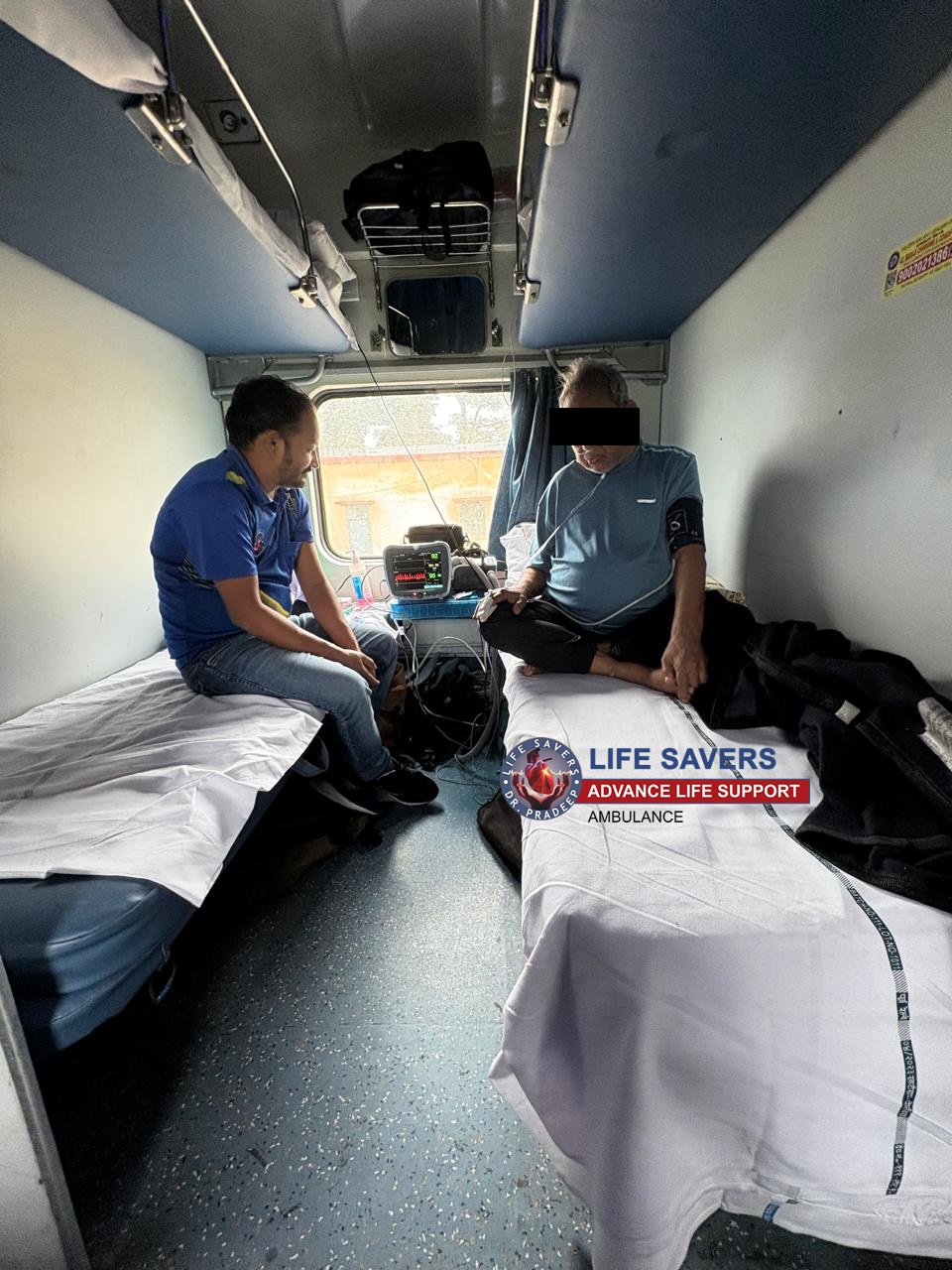
Lifesavers Ambulance: Precision Planning for Critical Long-Distance Transfers
This case highlights Lifesavers Ambulance’s expertise in handling complex medical transfers, especially for patients with high oxygen demands and chronic conditions. Our team meticulously calculates medical needs and designs tailored transfer plans to ensure safe, uninterrupted care throughout each journey.
At Lifesavers, we understand the critical nature of oxygen management and other life-support needs for high-risk patients. Whether you’re facing a high-altitude emergency or a long-distance medical transfer, Lifesavers Ambulance is here to offer expert guidance, specialized services, and compassionate care for every mile of the journey.
